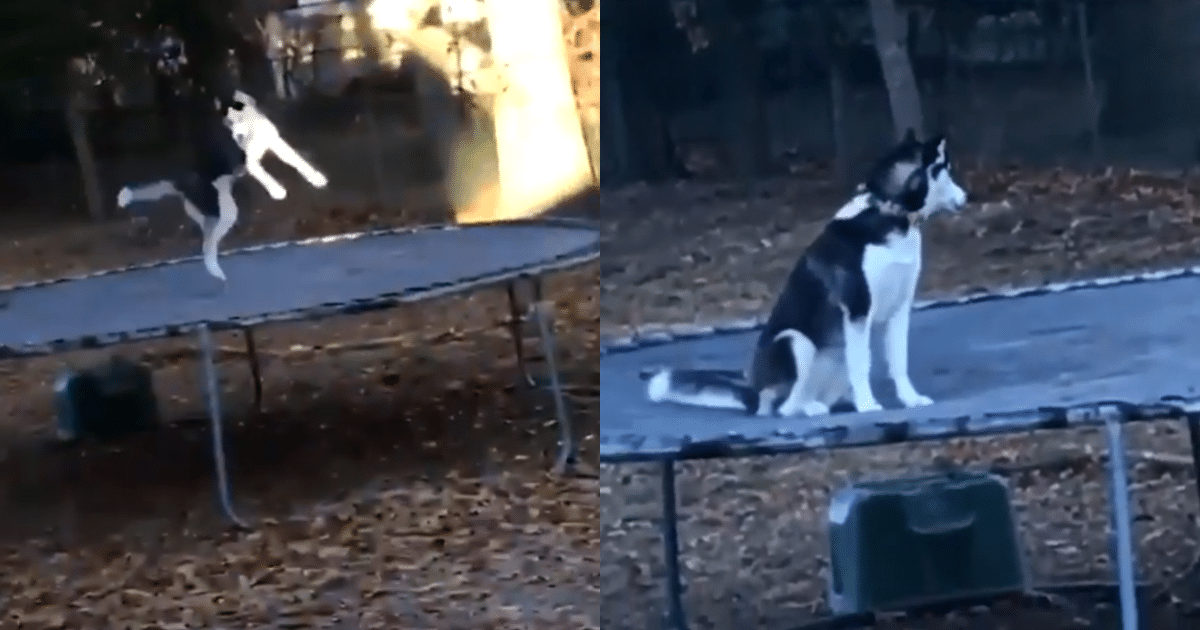Lately there has been an increase, in my area anyway, in “Board and Train” businesses (B & T). You give them your dog for one, two, or three weeks, and get back a dog who is . . . what? Much better behaved? Perfect on leash walks, never jumps up, and only barks on cue? Or, no different than before a month later? Which is it? When I started in this field, in the Olden Days before electricity (or was that just before cell phones and TikTok?), these kinds of opportunities were relatively common. There were certainly options for taking your dog to a dog training class, but many, if not all, were punishment- based.
Prong collars and hard leash jerks were so common that I started Dog’s Best Friend Dog Training classes soon after opening in 1989, because so many dogs coming in for consults had behavior problems caused by rough handling in classes. Over time, positive-forward classes became more and more popular, punishment-focused classes faded away, and “board and train” was less common. But B & T is becoming popular again, and I thought it would be useful to have a discussion about its advantages and disadvantages. I would especially love to hear if you have had any experience with it yourself. Here’s my take on it:
The Advantages of Board and Train:
Let a Pro Get Things Started Dog training is a science, a sport, and an art. Being a really good trainer means understanding how animals learn, how to use your body and voice to communicate clearly, and having enough experience to trust your gut when it tells you to go slow with this dog but speed up with another one. Training a dog who has never been trained, if you’ve never done it yourself, is a bit like getting on a horse, first time, on a steed who has never been ridden. Well, not the getting slammed into the ground when the horse bucks you off part, but you get the idea.
Having a good trainer, who knows how to use positive reinforcement and avoid punishment when at all possible, has great timing and body awareness, and sees each dog as an individual, can get a dog started with a great foundation, relatively quickly. Priming the pump as it were.
Shop It Out: We’re busy! We’re all so busy! What a joy to send your dog to camp and have her come back with an entirely new skill set! Not only that, but people don’t come hard-wired to know how to train dogs; we primates do all kinds of things naturally that don’t make sense to a dog. We assume they will walk beside on leash because they love us and that’s what our friends do. We say “Come!” while walking toward the dog and “tell” the dog in canine-speak not to move forward toward us. A professional trainer’s job is to do the training, so you can relax for a bit after working all day at your real job.
Going to Camp: Depending on the set up, board and train operations might allow your dog lots of opportunities to mix with a variety of dogs, and learn different play styles. Perhaps your Border Collie has never seen a Frenchie and freaks out the first time he meets one. (Ask me how I know.) Maybe your LabraDoodle plays a little rough and could use a pro to help him learn to be more polite?
The Disadvantages of Board and Train
Who Trained You? If dog training (and handling), is a science, a sport, and an art, who taught you how to use positive reinforcement effectively? (It ain’t rocket science, but it’s not just giving out cookies and saying “Good job!” either.) Did you learn how your body language affects your dog’s behavior? Your tone of voice? How’s your timing, without practice?
Two to three weeks does not a trained dog make. Think about it—asking a dog to walk beside you quietly while ignoring all interesting things is a college-level accomplishment for a dog. How would you be at solving quadratic equations after just learning to count a few weeks ago? That means you will still be training your dog for months, at least, to come. Or forever, because, your behavior drives a lot of your dog’s behavior, and if you haven’t both learned and practiced dog training skills, a few weeks of training is going to fade away fast. If the B & T option doesn’t include a LOT of training, feedback, and coaching for you, I worry about its long-term effects.
Time is Not on Your Side: As alluded to above, there is just so much the most brilliant dog can learn in two to four weeks. Sending your dog away for training could be a great way to get your dog started on some basics, but the last thing I’d want to do is swamp a dog with too much too fast. When our Skip came, for example, I spent the first month on him learning his name, house training, and coming when called. That was it. I didn’t need him to learn a raft of tricks and cues, I wanted him to learn to trust me, learn about me, Jim. Maggie, the farm, living in a house, etc. I’d much rather a dog get a solid foundation on a few things first, rather than the litany of sit, lie down, heel, stay, four on the floor, walk politely on leash, etc etc, that so many people expect.
Context is Everything. Sort of. Almost. Ever seen someone you thought you knew well in a new context and couldn’t figure out their name? Ever been asked to solve a math problem while trying to figure out which way to turn off the highway? Context matters in two ways: First, just because a dog learns to stay for two minutes in a trainer’s backyard doesn’t mean they’ll be able to do it in your living room. That’s why class instructors work so hard to teach owners the importance of training in different environments, and often set up “field trips” to a variety of situations.
Board and train places need to explain explicitly the importance of context, AND they need to explain to you that you will need to work on the other aspects of context–distance (from you), duration (of stay for example), and distraction level. Asking a dog to come when he is chasing a squirrel has little relation to coming when called in from the backyard at dinner time.
How Deep are Your Pockets? I was checking on prices for B & T and admit to being stunned. One place asks for $2,800 for two weeks, another three weeks for the same amount. Some added an extra $500 to spend a half day with you teaching you to handle your dog. In contrast, family dog training classes cost around $140-50 for 5-6 weeks of training for both you and your dog. Of course, these classes last about an hour, just once a week, but nonetheless, the out-of-pocket cost is literally about 5% of the cost of B & T.
What Happens in Vegas? What do you know about how your dog is being treated? What kinds of methods—especially punishment-based ones—are being used on your dog? I’ve noticed that some of the B & T’s I’ve looked at even mention “’the cost of the electric collar is extra.” Punishment-based training is having a moment, becoming more common lately, sad to say, in spite of the innumerable studies that show how much damage it can do. (See, for example, the position statement of the American Veterinary Society.) We can speculate why (gist for another post for sure), but the fact is that more and more trainers, at least in my area (yours?) are touting the benefits of electric collars, prong collars, and “letting your dog know who is the leader.” Glowing testimonials on websites aside, how do you know, really and truly, how your dog is being treated when she is away? Especially when there is a lot of pressure on the trainer to get fast results.
The fact is that what happens to your dog away from home doesn’t stay there. One moment of fear can have a profound effect on a dog, for the rest of its life. Many dogs are super resilient, yay for them and either their genes or their upbringing (probably both), but many are not, and one bad experience can pollute their life for years to come
My Take on This: First—I’m not objective. I started a consultant/training class business, Dog’s Best Friend Training in 1989, sold it to the amazing Aimee Moore 17 years ago, and am proud as a peacock about how it’s been helping dogs and their humans for 35 years. (35 years? What the what?!) Here are some of the kick ass trainer/consultants who have been with the business for well over twenty-five years, catching up just last week at the farm:
Here was the whole crowd — blast from the past! — in 2006, consultants, trainers, and volunteers (and Lassie!).
So . . . I have an obvious bias. But I am extremely cautious about B & T for a lot of dogs, for the reasons stated above, and because trainers like us too often see clients who have had bad experiences.
On the other hand, I can see how some B & T options could be a good choice. Perhaps you get a new dog when, through no fault of your own, your life suddenly blows up and you need it to get a jump start with people you trust as if with your life. Perhaps there is no way you can manage to socialize a new puppy because X or Y has happened. Or, perhaps, you know the trainer/owner well, they know the value of positive reinforcement and the dangers of punishment, have warned you not to expect miracles, and are committed to making sure that YOU get the training that is essential for the next months and years of your dog’s life. Not to mention that the cost is not going to eat into your dog food/toy/veterinary/house sitter budget.
What’s important to know is that dog and dog training have become big, bigger businesses since the pandemic. I see a lot of claims out there that make me shake my head. Basically, I’d say Buyer Beware for both classes and Board and Train. Just remember, you can walk out of a class at any time, but your dog can’t do the same if you are miles away and oblivious to what is happening.
If you’re interested in a B & T option, I’d recommend getting an in-person tour of their entire facility, watch them interact with the dogs, do a quick check with the Better Business Bureau, check out social media (with the obvious cautions), ask for very specific details about their training methods and what they promise, ask for a detailed account of how they are going to handle YOUR need to be a dog trainer/handler, etc. As I wrote this, I realized I’d recommend the same for anyone joining a class. It’s just that the stakes are higher for B & T’s, since you and your dog will be miles apart, and they can’t text you. (Yet.)
Please join in here! This post has already gained from conversation with some good friends (thank you!), and I’d love to hear your perspectives: Your experiences, if you’ve tried a B & T, if you have one yourself, if you’ve taken your dog to both, and any other perspectives/info you can share.
MEANWHILE, down on the farm: First, Ms. Turkey would like to say hello.
This is a crummy photo because it’s through the kitchen window, but Ms. Turkey has been cruising the yard every day for a week now, and we suspect she has a nest in our woods somewhere, like she has in the past few years.
But this is the first year she’s discovered the feeders, and I am wondering if she will decide to bring her chicks here once they have hatched.
Of course, if she does, next year we’ll have 10-15 full-grown turkeys pooping all over our yard, so maybe I should hope she’ll keep it to the woods.
Speaking of baby birds, the Phoebees in the carport fledged almost a week ago. One morning they were looking down at me, a few hours later they were gone. Here they are the day before.
The saga of the breeding birds continues. The house finches got off four lovely youngsters; I got to watch them feeding their wing-flapping teenagers for several days out the living room window. The Mourning Dove babies must be close to hatching, and the bluebird babies are long gone. I just discovered a wren has taken over the house and lay a bunch of lovely, tiny, speckled eggs. Now that she’s layed eggs, I’m not going to destroy them–wrens are native birds and it’s not legal or ethical to harm her.
However, wrens have no such compunctions. They are famous for invading blue bird nests, killing the eggs or hatchlings, and taking it over. That might be what happened here. One excellent site suggests putting up a second nest near by; each one situated to emphasize the slightly different preferences of each species. I should note that we have an occupied wren nest in the front yard, and there was one in a pile of wire and wood about 100 yards from the former bluebird nest. Apparently, we are a high rent wren district. I love having them, but wrens can nest in a variety of places, they don’t need a cavity in wood as much as BBs do, so we’re going to put up another house soon for the blue birds.
Continuing the nature special, we got to see Brood XIII Cicadas! I’m so jazzed to have gotten to see them, in a prairie of some dear friends. We hadn’t seen a one, the word is “there are none around the Madison area,” but these guys showed up last week in a good friend’s prairie, and we got to get a good look. There was probably a forest here long ago?
Maggie and Skip would like to remind me that this blog is supposed to mostly be ABOUT DOGS and are sick of listening to me clack on about fluttery things. Maggie, as always, has a lot to say, as is clear in this photo. Please provide a caption!
In closing, after learning about the current prices for B & T, and I am considering starting one at the farm. For $4,999 a week, your dog can learn to eat sheep poop, roll in sheep poop, lift each paw up on cue to be cleaned off of mud and poop, and track dirty sheep-poopy paw prints in the house when Trisha gets distracted and forgets to do her job.
Kidding aside, let’s have a good conversation about classes versus B & T, and, I should add, just watching videos and learning dog training on your own. Reading your comments will be one of my many delights this week. Thank you for joining in!




























 English (US) ·
English (US) ·